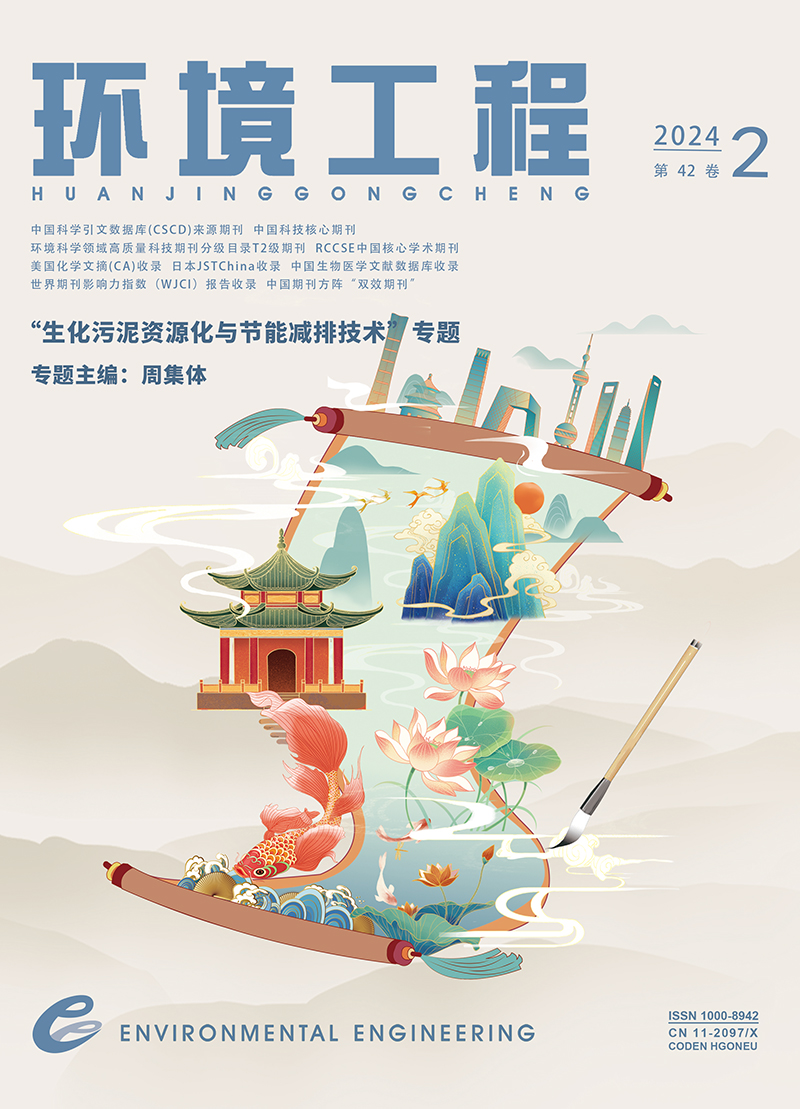| [1] |
国务院.国务院关于印发水污染防治行动计划的通知[R].北京:中华人民共和国中央人民政府,2015.4.
|
| [2] |
市水务局举行两个“三年行动方案”新闻通报会[EB/OL].http://swj.beijing.gov.cn/swdt/swyw/202302/t20230217_2918681.html.2023-02-17.
|
| [3] |
全国人大财政经济委员会,国家发展和改革委员会.中华人民共和国国民经济和社会发展第十四个五年规划和2035年远景目标纲要[M].北京:中国计划出版社,2022.
|
| [4] |
陈吉宁.2021年北京市人民政府工作报告[R].北京:北京市第十五届人民代表大会第四次会议,2022.1 https://www.beijing.gov.cn/gongkai/jihua/zfgzbg/202102/t20210201_2249908.
html.
|
| [5] |
中共北京市委办公厅、北京市人民政府办公厅.关于进一步强化河(湖)长制工作的实施意见[R].北京:北京市人民政府,2023.1 https://www.beijing.gov.cn/zhengce/zhengcefagui/202301/t20230110_2894772.
html.
|
| [6] |
胡明,王培京,邱彦昭,等.基于经济性评价的北京市平原区农村污水治理模式优化研究[J].环境科学学报,2021,41(1):133-142.
|
| [7] |
北京市生态环境局、北京市市场监督管理局.农村生活污水处理设施水污染物排放标准:DB11/1612—2019[S].北京:北京市生态环境局,北京市市场监督管理局,2019.
|
| [8] |
北京市环境保护局,北京市质量技术监督局.水污染物综合排放标准:DB11/307—2013[S].北京:中国标准出版社,2013.
|
| [9] |
陈明霞,熊贵耀,张佳鹏,等.湘江流域水质综合评价及其时空演变分析[J].环境工程,2019,37(10):83-90
,104.
|
| [10] |
景胜元,徐明德,武春芳.汾河水库、上游水质分析及其污染防治措施[J].环境工程,2014,32(4):18-21.
|
| [11] |
陈辉,顾建辉,李治源.不同水质评价方法在城市河道水质评价中的应用比较[J].苏州科技大学学报(工程技术版),2017,30(1):42-46.
|
| [12] |
刘颖.浙江省“剿灭劣Ⅴ类水”成果评价研究[J].浙江水利水电学院学报,2021,33(1):11-15
,27.
|
| [13] |
傅金祥,陈喆,马兴冠,等.改良模糊综合评价法在水质评价中的应用[J].环境工程,2011,29(6):120-123
,127.
|
| [14] |
董瑞,李霞.基于PSR-模糊综合评价方法的天津市水环境安全评价[J].天津理工大学学报,2021,37(6):53-57.
|
| [15] |
徐光宇,柴国平,徐明德,等.主成分分析法在汾河太原城区段水质评价中的应用[J].环境工程,2014,32(6):122-124
,113.
|
| [16] |
王成杰,张森.基于主成分和粒子群优化支持向量机的水质评价模型[J].环境工程学报,2014,8(10):4545-4549.
|
| [17] |
刘贤梅,周忠发,张昊天,等.基于主成分分析的喀斯特山区河流水质评价及水质时空特征分析:以贵州省张维河为例[J].环境工程,2019,37(10):49-54
,132.
|
| [18] |
杜书栋,关亚楠,李欣,等.基于熵权法改进的综合污染指数的水质评价:以白云湖为例[J]环境科学学报,2006,(6):205-212.
|
| [19] |
王丽琼.基于熵权的属性识别模型在湖泊水质富营养化评价中的应用[J].环境工程,2006,24(5):69-71
,88.
|
| [20] |
王勇.房山区农村生活污水处理效果与后评价[D].北京:中国农业大学,2017.
|
| [21] |
潘湛昌,魏志钢,胡光辉,等.熵增加原理与科学发展[J].价值工程,2011,30 (31):251-253.
|
| [22] |
LUDOVISI A,POLETTI A.Use of thermodynamic indices as ecological indicators of the development state of lake ecosystems.1.Entropy production indices[J].Ecological Modelling,2003,159(2/3):203-222.
|
| [23] |
STEINBORN W,SVIREZHEV Y.Entropy as an indicator of sustainability in agro-ecosystems:north Germany case study[J].Ecological Modelling,2000,133(3):247-257.
|
| [24] |
SVIREZHEV Y M.Thermodynamics and ecology[J].Ecological Modelling,2000,132(1-2):11-22.
|
| [25] |
AOKI I.Holological study of lakes from an entropy viewpoint-lake Mendota[J].Ecological Modelling,1989,45(2):81-93.
|
| [26] |
陈小红,汤德梅.水库水体底质界面污染物交换的熵描述[J].中山大学学报(自然科学版),1998(增刊2):5-8.
|
| [27] |
ARMANDO G M,ALEJANDRO Z A,BÁRBARA G R,et al.On an exergy efficiency definition of a wastewater treatment plant[J].International Journal of Thermodynamics,2003,6(4):169-176.
|
| [28] |
RITTMANN B E,MCCARTY P L.Environmental biotechnology:principles and applications[M].McGraw-Hill Education,2001.
|
| [29] |
MCCARTY P L.Thermodynamic electron equivalents model for bacterial yield prediction:modifications and comparative evaluations[J].Biotechnology and Bioengineering,2007,97(2):377-388.
|
| [30] |
国家环境保护总局,国家质量监督检验检疫总局.中华人民共和国地标水环境质量标准:GB 3838—2002[S].北京:中国标准出版社,2002.
|
| [31] |
国家环境保护总局《水和废水监测分析方法》编委会编.水和废水监测分析方法(第四版)[M].北京:中国环境科学出版社,2002.
|
| [32] |
中华人民共和国国家质量监督检验检疫总局,中国国家标准化管理委员会.污水排入城镇下水道水质标准:GB/T 31962—2015[S].北京:中国标准出版社,2016.
|
| [33] |
北京市环境保护局、北京市质量技术监督局.城镇污水处理厂水污染物综合排放标准:DB11/890—2012[S].北京:中国标准出版社,2012.
|
| [34] |
李静,沈梦兰,何立山,等.不同水质目标下居延海(东)水环境容量分析[J].中国环境监测,2022,38(3):120-125.
|
| [35] |
孙雪梅,何琦,王萌萌.污水厂尾水受纳水体水环境容量分析[J].山东水利,2021(9):51-52,55.
|
| [36] |
薛爽,赵庆良,魏亮亮.二级处理出水中有机物的分级特性[J].哈尔滨工业大学学报,2008,40(8):1208-1213.
|
| [37] |
罗丽.TOC和氮磷对水环境影响的熵增评价方法研究[D].西安:西安建筑科技大学,2013.
|
| [38] |
房慧德,赵炎,李现瑾,等.农村生活污水处理设施尾水中TOC与COD相关性研究[J].环境保护与循环经济,2020,40(12):25-28.
|
| [39] |
陈芳,徐建芬,王昂,等.杭州市主要污水处理厂TOC与COD关联分析[J].环境科学导刊,2018,37(3):75-78.
|
| [40] |
南海涛,曾杰,王新霞.城市污水中TOC与COD的关系[J].中国给水排水,2002,18(6):80-81.
|
| [41] |
BEAL C M,HEBNER R E,WEBBER M E.Thermodynamic analysis of algal biocrude production[J].Energy,2012,44(1):925-943.
|
| [42] |
邵骏,杜涛,郭卫,等.金沙江上游河段水温变化规律及其影响因素探讨[J].长江科学院院报,2022,39(8):17-22
,28.
|
| [43] |
CLARK E,WEBB B W,LADLE M.Microthermal gradients and ecological implications in Dorset rivers[J].Hydrological Processes,1999,13(3):423-438.
|
| [44] |
HAO X D,WU D Q,LI J,et al.Making waves:a sea change in treating wastewater-why thermodynamics supports resource recovery and recycling[J].Water Research,2022,218:1-5.
|
| [45] |
陈曦,罗小玲.污染熵及其在污染物降解过程中的应用[J].环境工程,2010,28(增刊1):410-413.
|
| [46] |
崔键,杜易,丁程成,等.中国湖泊水体磷的赋存形态及污染治理措施进展[J].生态环境学报,2022,31(3):621-633.
|
| [47] |
黄娟,安艳玲,吴起鑫.清水江流域水体中氮磷分布及富营养化程度评价[J].环境工程,2016,34 (5):143-147.
|
| [48] |
楚想想.基于热力学熵增的污水回用效果评价[D].西安:西安建筑科技大学,2017.
|


 Login
Login Register
Register E-alert
E-alert






 DownLoad:
DownLoad: